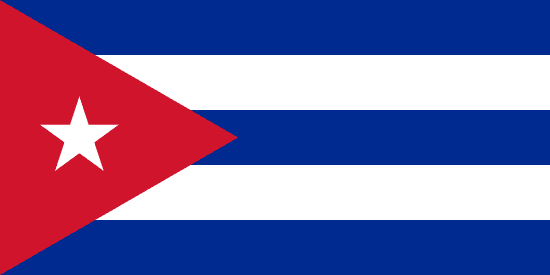"No hay fiesta como esta | There is no party like this one"
About:
Santiago de Cuba, founded by Spanish conquistador Diego Velázquez de Cuéllar in 1515, is the second largest city in Cuba. It played a significant role in the country's history, from being a hub for the slave trade in the 16th century to the starting point of Fidel Castro's revolution in 1953. Today, it's known for its rich cultural heritage, including music, architecture, and festivals. Despite economic challenges, Santiago de Cuba remains a vibrant city, reflecting the resilience and spirit of its people.
When to visit:
Santiago de Cuba, located in the southeastern region of Cuba, is a vibrant city known for its rich history, lively music scene, and colorful festivals. The best time to visit Santiago de Cuba on a holiday is during the month of July for the famous Santiago de Cuba Carnival, one of the most important and traditional celebrations in the country. This lively event features colorful parades, music, dancing, and a vibrant atmosphere that showcases the cultural heritage of the city. Visitors can immerse themselves in the local traditions, enjoy the festive atmosphere, and experience the unique energy of this dynamic city during this time of year.
When to avoid:
Traveling to Santiago de Cuba on a holiday can be challenging during the peak hurricane season, which typically occurs from August to October. These months are characterized by heavy rainfall, high humidity, and the possibility of tropical storms or hurricanes. Travelers may experience disruptions to their plans due to inclement weather, including flight cancellations and road closures. It is advisable to monitor weather forecasts and consider alternative travel dates to avoid potential travel disruptions during this period.
"Wet Season (May-Oct)"
The coldest and wettest part of the year in Santiago de Cuba is from May to October, with the peak in September. The average temperature ranges from 24°C to 31°C, with humidity often above 80%. Rainfall averages around 130mm per month, with September seeing up to 180mm. Sunlight is variable, with cloud cover often blocking the sun. However, expect around 5-6 hours of sunshine daily. For a visitor, an average day would involve warm, humid weather with a good chance of afternoon showers. Despite the rain, it's still a vibrant time to explore the city's rich heritage.
"Summer (July–September)"
The warmest part of the year in Santiago de Cuba typically spans from May to October, with the peak temperatures occurring in July and August. During this period, the average high temperature ranges from 31°C (88°F) to 33°C (91°F), while the average low temperature varies between 23°C (73°F) and 24°C (75°F).
Rainfall is relatively high during these months, with August and September being the wettest months, averaging about 180mm of precipitation. This period is also part of the hurricane season, so occasional heavy storms are possible.
The region enjoys an average of 7-8 hours of sunlight per day during this period, with high UV levels. So, it's recommended to use sun protection while going out in the daytime.
Humidity levels are quite high, often exceeding 80%, which can make the heat feel more intense. The sky is usually partly cloudy to cloudy, with cloud cover ranging from 50% to 70%.
A typical day for a visitor during the warmest part of the year in Santiago de Cuba would feel hot and humid, especially in the afternoon. Mornings and evenings are slightly cooler and more comfortable. Despite the heat, the region's vibrant culture and lively festivals can still be enjoyed. However, it's advisable to stay hydrated, wear light clothing, and take precautions against the sun. Rain showers or thunderstorms can occur, usually in the afternoon or evening, adding a refreshing change to the tropical climate.
Language:
Spanish is the primary language spoken in Santiago de Cuba, as it is the official language of Cuba. The local dialect features influences from African languages, reflecting the city's rich Afro-Cuban heritage. English is also understood to some extent, particularly in tourist areas and among younger generations due to its inclusion in the educational curriculum.




